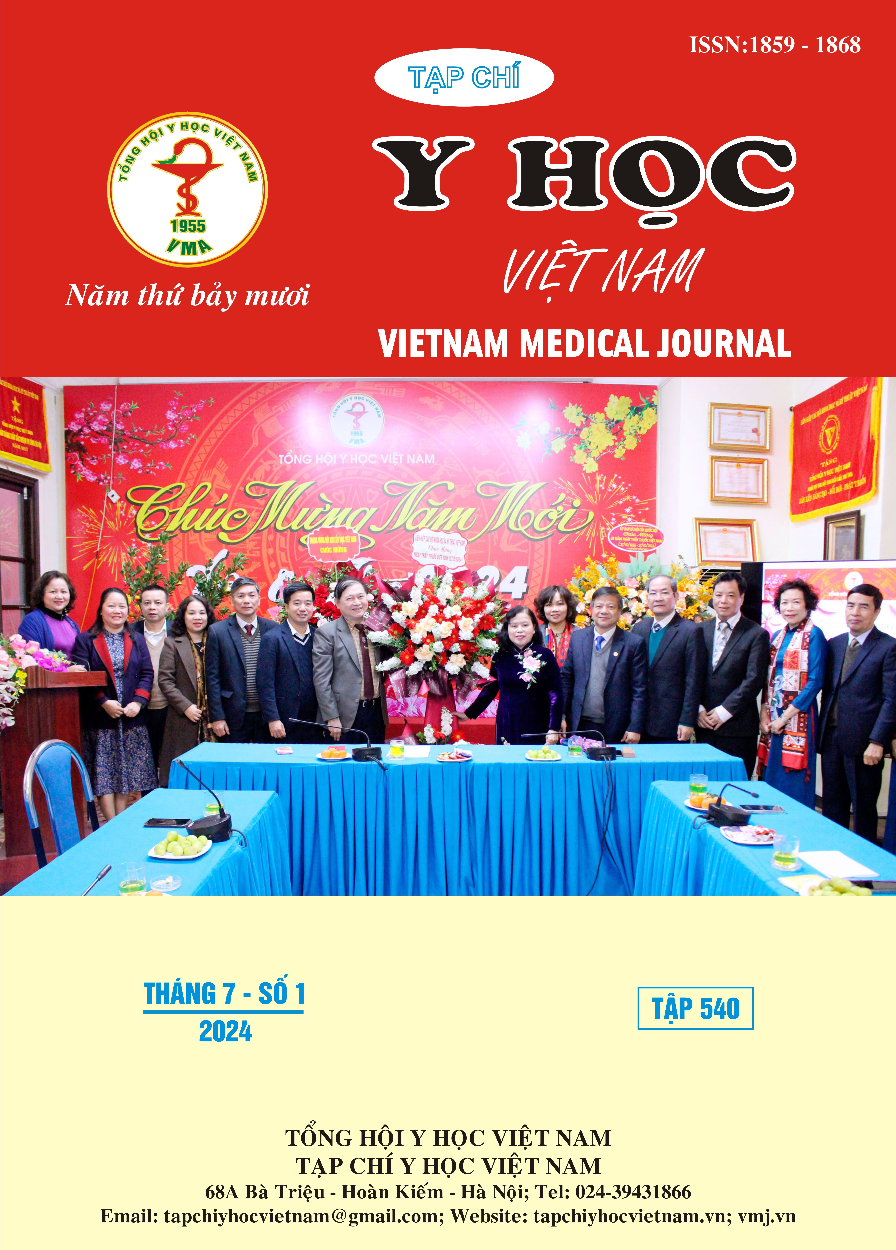CORRELATION BETWEEN MULTI-SLICE COMPUTED TOMOGRAPHY IMAGING FEATURES AND HISTOLOGICAL RISK STRATIFICATION OF GASTRIC GASTROINTESTINAL STROMAL STROMAL TUMORS
Main Article Content
Abstract
Objective: To analyze the correlation between multi-slice computed tomography imaging features and stratify the histological risk of gastric gastrointestinal stromal tumors. Materials and methods: From 2016 to 2023, 105 patients diagnosed with gastric gastrointestinal stromal tumors were examined and surgically treated at 108 Military Central Hospital and E Hospital. These patients' clinical data, computed tomography imaging, and histopathology were described cross-sectionally. Study populations were collected data retrospectively and prospectively. The relationship between malignant potential and characteristic features of CT (including tumor location, size, direction of growth, necrosis or cystic degeneration, and presence of lymph nodes) was analyzed using univariate analysis. ROC curves were used to evaluate the predictive value of tumor size in stratifying the risk of malignancy. Results: The study was conducted on 105 gastrointestinal stromal tumor patients (50 men, 55 women; average age 62.06±9.05 years), including 55 patients in the low malignant potential group and 50 patients in the high malignant potential group. There were no significant differences in age, gender, or tumor location between the two groups. The two groups had statistically significant differences in size, growth direction, necrosis or cystic degeneration, and lymph nodes. ROC curve analysis showed that the tumor size threshold that allows predicting high malignant potential is 77.5cm with a sensitivity of 78% and a specificity of 45%. Conclusion: Multi-slice computed tomography is considered the first choice in diagnosing and stratifying the risk of gastric gastrointestinal stromal tumors.
Article Details
Keywords
Gastrointestinal stromal tumors (GIST), multi-slice computed tomography (MSCT).
References
2. Wang TT, Liu WW, Liu XH, et al. Relationship between multi-slice computed tomography features and pathological risk stratification assessment in gastric gastrointestinal stromal tumors. World J Gastrointest Oncol. 2023;15(6):1073-1085.
3. Duffaud F, Blay JY. Gastrointestinal Stromal Tumors: Biology and Treatment. Oncology. 2003;65(3):187-197.
4. Egger J. Management of gastrointestinal stromal tumors: from diagnosis to treatment. Swiss Med Wkly. Published online March 20, 2004.
5. Wang JK. Predictive value and modeling analysis of MSCT signs in gastrointestinal stromal tumors (GISTs) to pathological risk degree. Eur Rev Med Pharmacol Sci. 2017;21(5):999-1005.
6. Rubin BP, Heinrich MC, Corless CL. Gastrointestinal stromal tumour. The Lancet. 2007;369(9574):1731-1741.
7. Sezer N, Deniz MA, Taş Deniz Z, Göya C, Araç E, Adin ME. Multislice Computed Tomography Imaging Of Gastrointestinal Stromal Tumors. Eastern J Med. 2017;22(3):97-102.
8. Kim HC, Lee JM, Kim KW, et al. Gastrointestinal stromal tumors of the stomach: CT findings and prediction of malignancy. AJR Am J Roentgenol. 2004;183(4):893-898.
9. Tateishi U, Hasegawa T, Satake M, Moriyama N. Gastrointestinal stromal tumor. Correlation of computed tomography findings with tumor grade and mortality. J Comput Assist Tomogr. 2003;27(5):792-798.
10. Tang B, Feng Q xia, Liu X sheng. Comparison of Computed Tomography Features of Gastric and Small Bowel Gastrointestinal Stromal Tumors With Different Risk Grades. J Comput Assist Tomogr. 2022;46(2):175-182.


